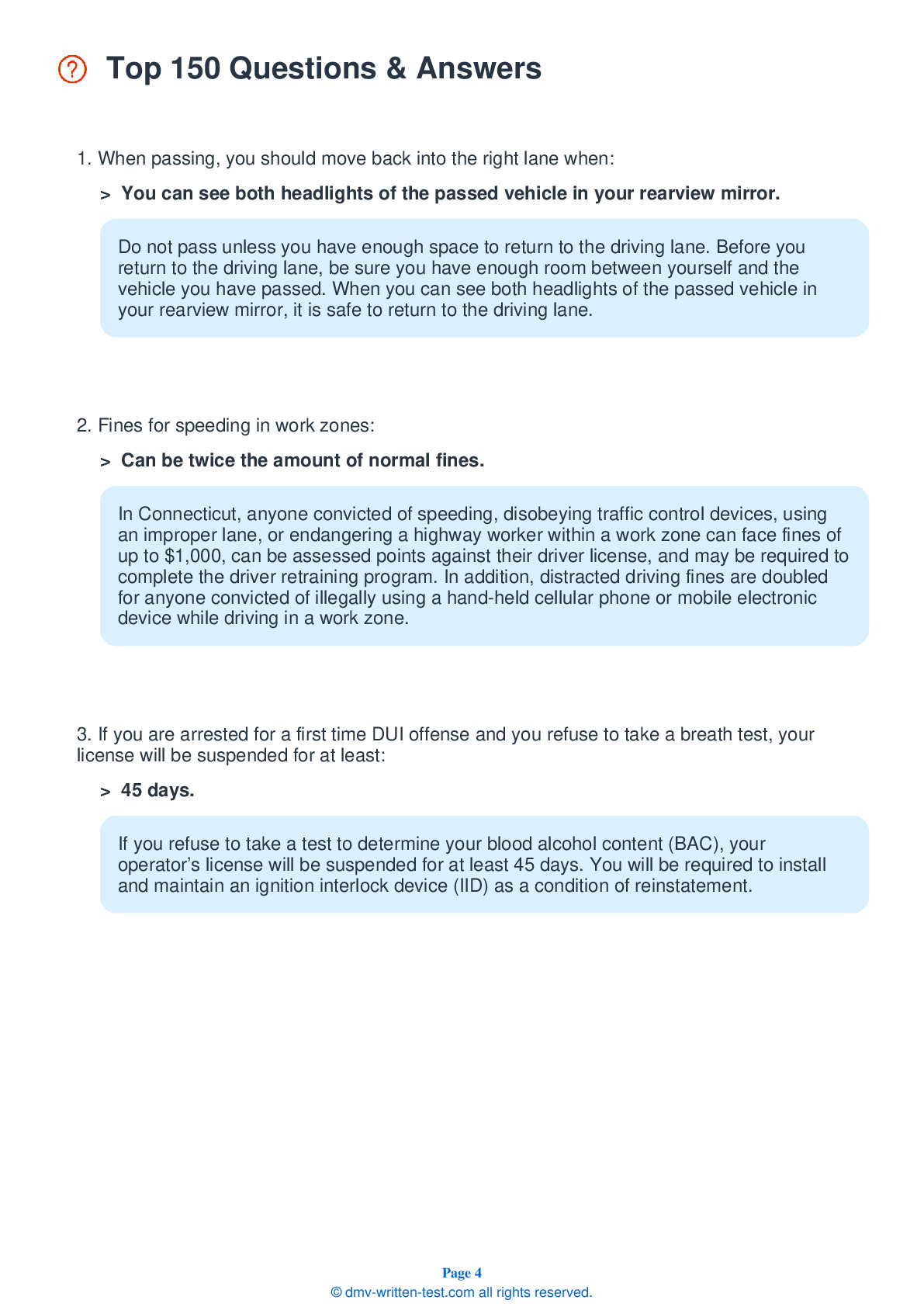2025 Connecticut Permit Test 13
The following questions are from real DMV written tests. These are some of the actual permit questions you will face in Connecticut. Each permit practice test question has three answer choices. Select one answer for each question and select "grade this section." You can find this button at the bottom of the drivers license quiz. For a complete list of questions and answers for Connecticut please visit https://cheat-sheets.dmv-written-test.com/en/connecticut/car.
Number of Tests
Number of Question
Passing Score
1. Which of the following statements is correct?
Explanation
Use your right foot for both braking and accelerating. You should apply the brakes gently with increasing pressure so that your vehicle stops gradually and smoothly.
2. You are approaching a green traffic light and traffic is blocking the intersection. What is the best thing to do?
Explanation
Even if your light is green, you must not enter an intersection unless you can get completely through the intersection before the light turns red. If you block the intersection, you can be cited.
3. The proper way to make a right turn is to:
Explanation
Before beginning a right turn, use the appropriate signal to give surrounding drivers adequate notice of your intentions. Slow down and approach the intersection from the right lane, staying as close as is practical to the right curb or edge of the roadway.
4. Stopping distances and the severity of collisions:
Explanation
Excessive vehicle speed can have disastrous effects. As a vehicle's speed increases, the potential impact of a collision also increases, elevating the possibility of serious injury and death. Increase your following distance as your speed increases to ensure that you will be able to stop safely if needed.
5. Water on the road can cause a vehicle to hydroplane. Your car may hydroplane at speeds as low as:
Explanation
Hydroplaning occurs when there is standing water on a roadway. At speeds up to 35 mph, most tires will channel water away from the tire. As your speed increases past 35 mph, tires cannot channel the water as well and your tires may start to lose contact with the road and ride over the water like a set of water skis.
6. When you are facing a green light and there are pedestrians in the intersection:
Explanation
When facing a green light, you must yield to pedestrians and vehicles already in the intersection. Drivers must yield to pedestrians when turning on a steady green signal.
7. When driving under snowy or icy conditions:
Explanation
When driving under snowy or icy conditions, you should make speed and directional changes gradually. Never use cruise control when driving on snow or ice because your tires may lose contact with the road and you will lose control of your vehicle.
8. After passing a vehicle, it is safe to return to your driving lane when:
Explanation




